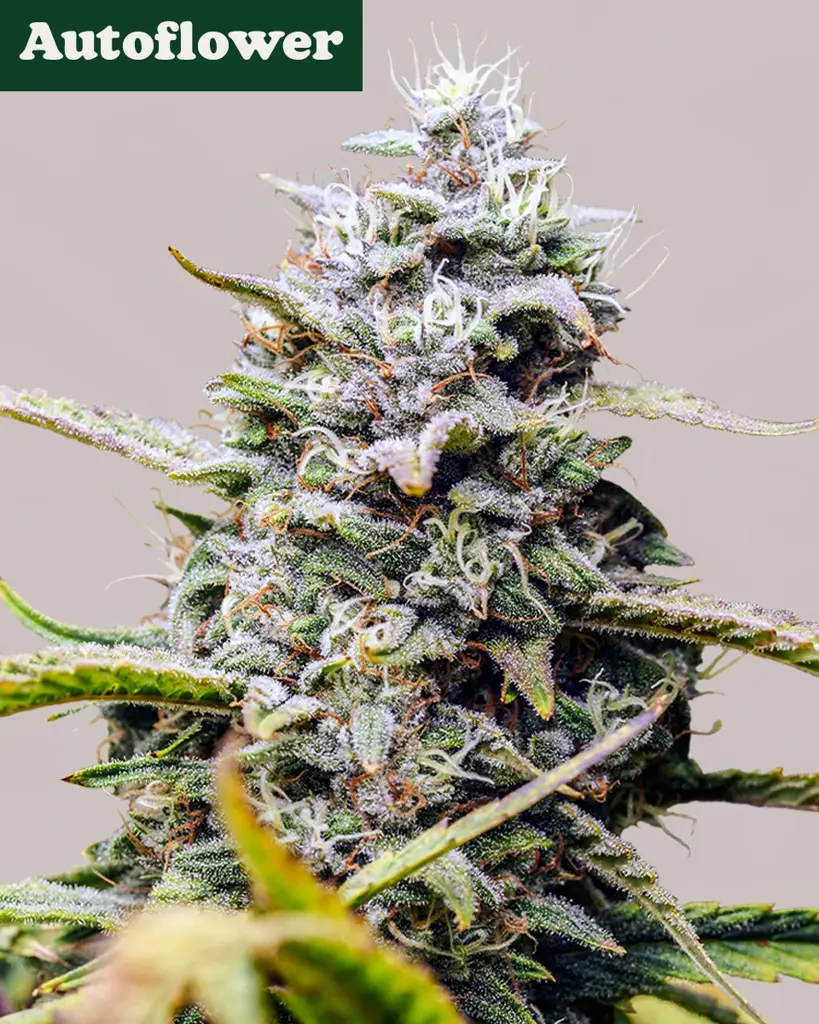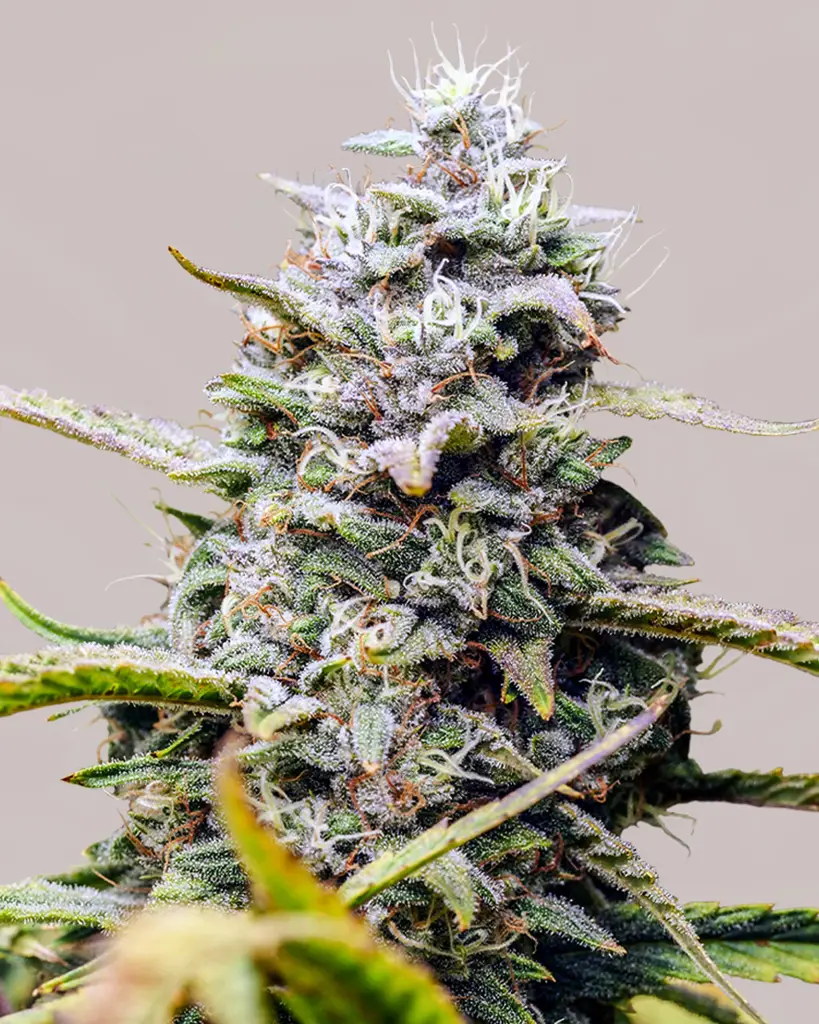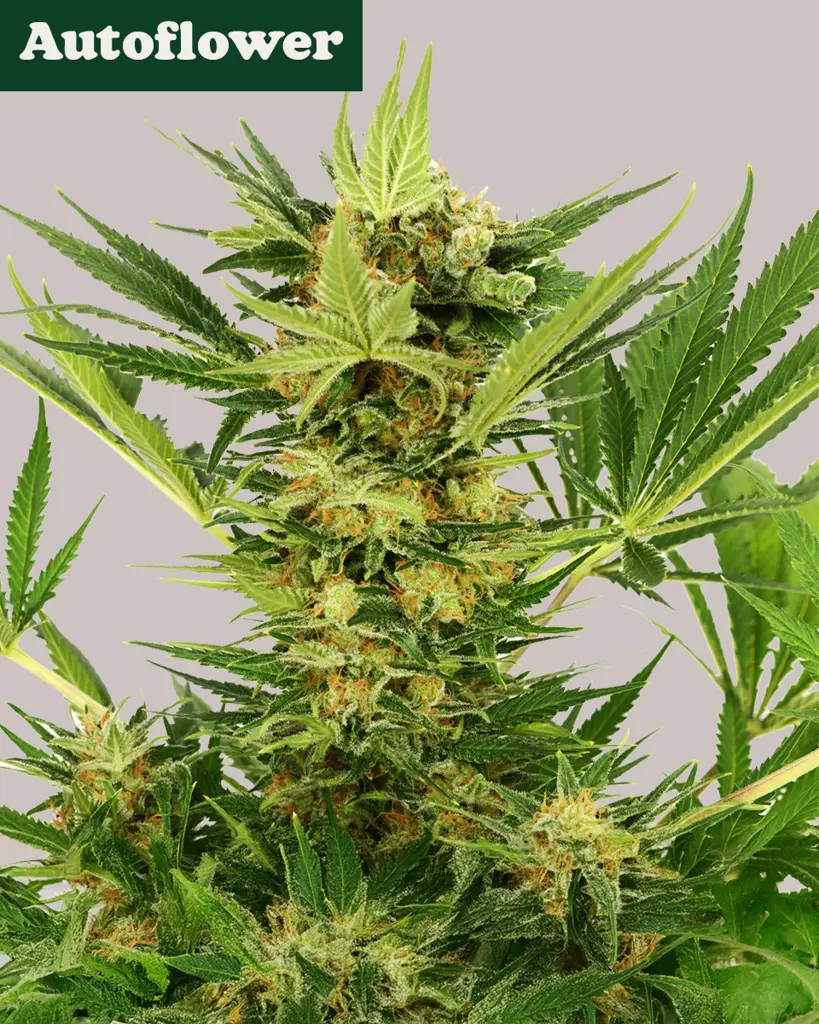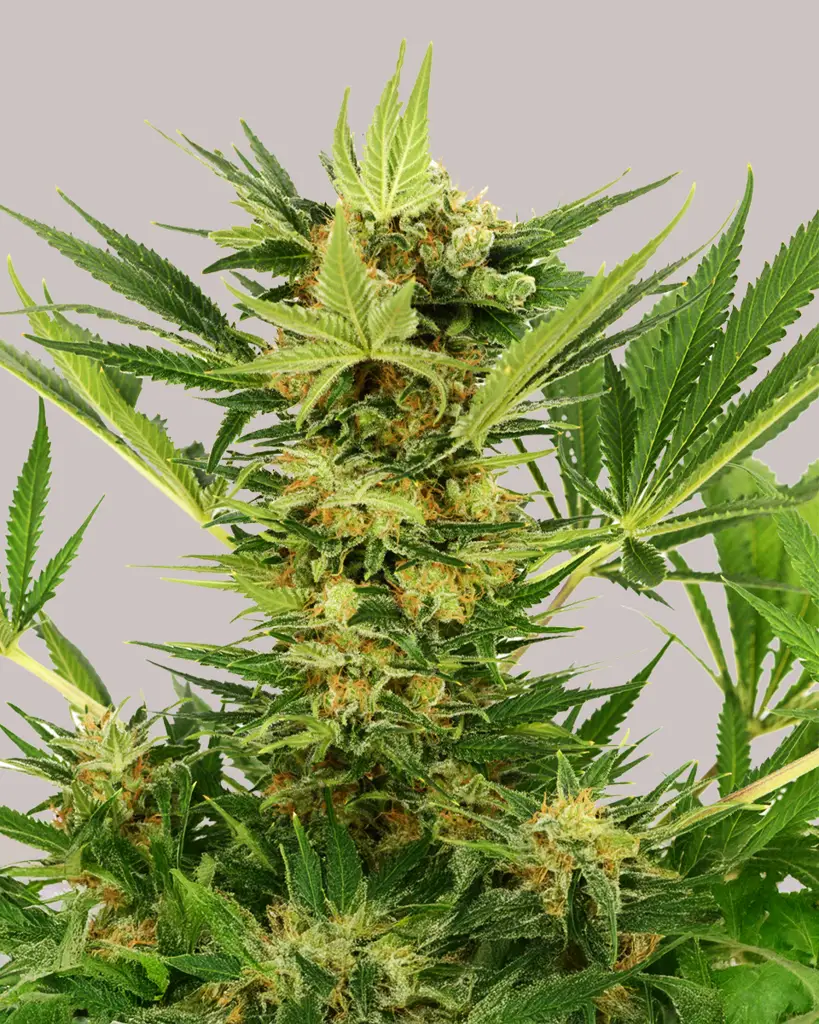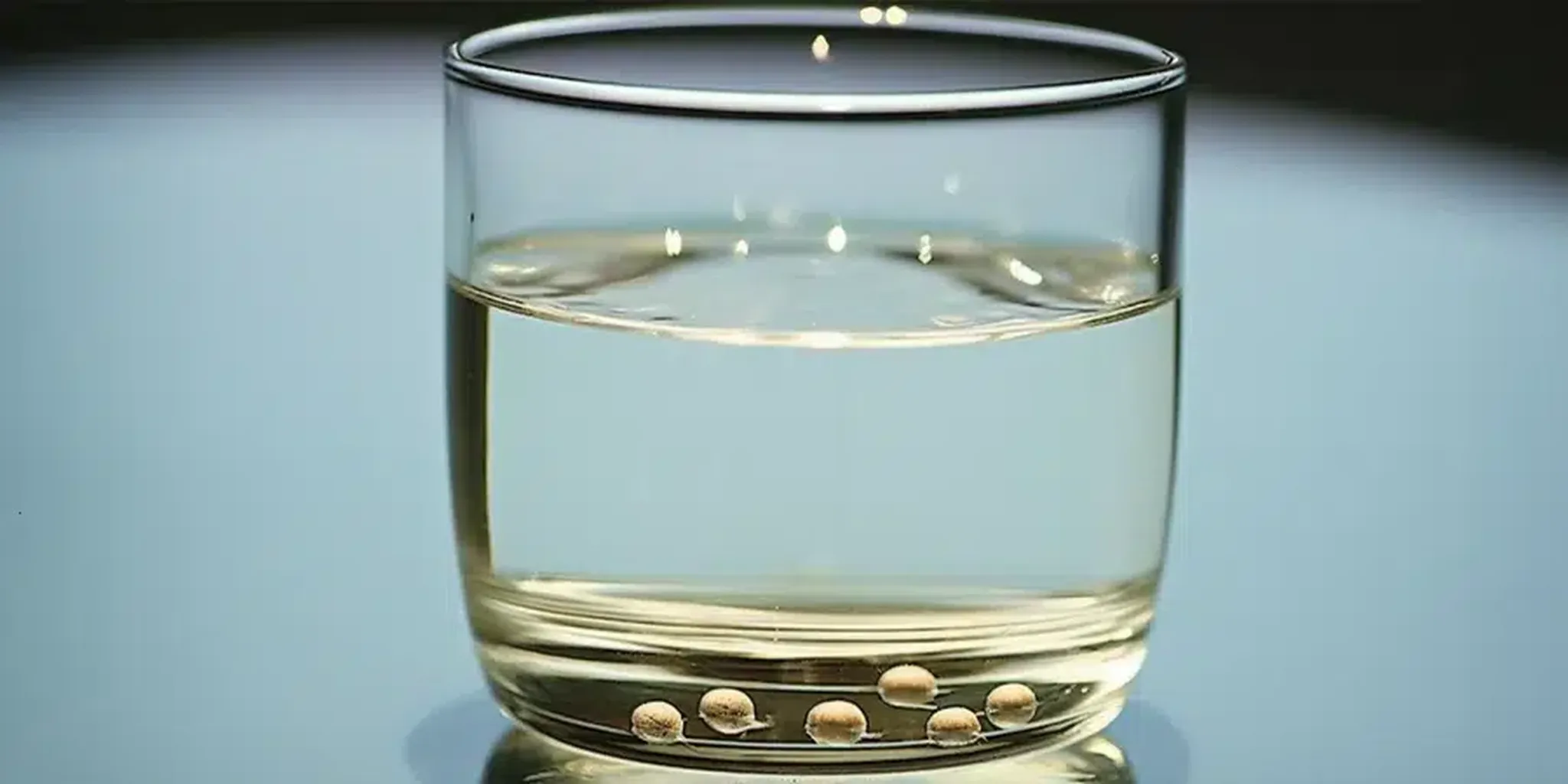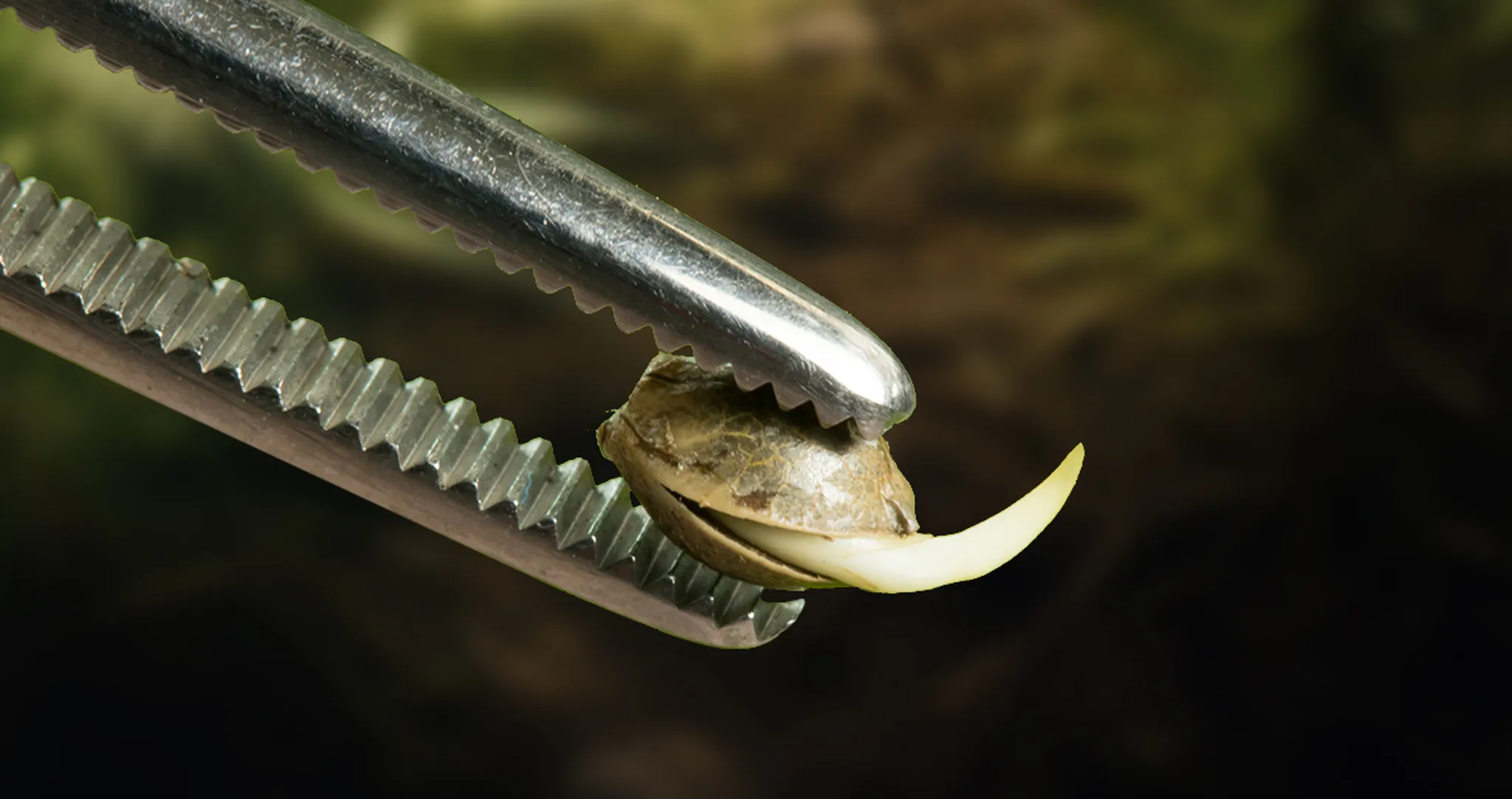
How To Germinate Cannabis Seeds
If you carefully follow either of the germination methods detailed below, you will have every reason to be on the green path to success. Be patient and always work in a clean and sterile environment by using isopropyl alcohol to sterilize. Use sterile tweezers, clean hands, and a clean work area. Good luck aiming for the stars, and congratulations on your first steps in becoming a green-thumbed enthusiast!
Gabriel ILGM
Table of contents
Our Top Tip for Guaranteed Germination Success
One of the best ways to ensure you get a good germination rate with long, healthy taproots (officially called “Radicle”) perfect for transplanting is to combine the pre-soak and paper towel methods. Over the years, we have found that starting your cannabis seeds in water for 24 to 48 hours and then transferring them to a plastic tub and paper towels for at least 48 hours works wonders. Once you see the beginning of a root poking out of the seed shell, you can start preparing your seed’s next home and transplant them.
Patience is a Virtue When Germinating Cannabis Seeds
The most important skill to have is patience. Cannabis seeds are a natural product, and not everything always goes as planned. As long as you nurture the seeds with the right environmental conditions, there is a very good chance your beans will sprout, but we simply can’t guarantee a 100% successful germination rate.
If you have stubborn seeds that require more time, simply wait longer and have faith, or go directly to our guide on what to do with truly pig-headed seeds that won’t germinate.
Cannabis seeds come in all shapes and sizes, and every seed will act differently—some germinate faster than others, some produce long taproots, while others turn out much shorter. Patience is a virtue, especially when starting your seeds off for the marathon ahead. The tips I’m offering below will make sure you give your seeds the best possible start!
Germinating Cannabis Seeds Using the Paper Towel Method

The recommended and easy-to-follow method for germinating cannabis seeds is to use a couple of paper towels and a plastic tub. Below we explain everything you need to know about how to successfully germinate seeds using the paper towel method.
What You Will Need
A roll of thick paper towels (kitchen grade)
1 x Small plastic tub and lid
1 x Spray bottle
1 x Sticker labels and pen
Cannabis seeds
Dark cupboard space
Steps to Follow for Germinating Cannabis Seeds in Paper Towels
Step 1 - Take your sticker labels and write the name of the strain and the date. Place the sticker on the outside of the plastic tub as a reference. (If germinating multiple strains, make sure each tub is clearly labeled.)
Step 2 - Take a sheet of thick kitchen-grade paper towel and spray it until it is wet (damp, but not soaked). Fold it into the dimensions of your plastic tub and place it in the tub.
Step 3 - Carefully place your seeds on the damp paper towel, giving the seeds plenty of space. Now, take another paper towel sheet, spray it until it is damp (not soaked), and likewise fold it to the appropriate size. Now, place the second wet paper towel over the seeds like a blanket.
Step 4 - Now place the lid over the tub, as this will keep the moisture inside while the seeds are germinating and prevent the paper towel from drying out.
Step 5 - Place the labeled tub in a dark, cupboard space and check on the seeds every 24 hours. You should be seeing taproots within 48-72 hours.
Step 6 - Once you see one or more seeds have sprouted a taproot, it is time to prepare your chosen grow medium for the transfer of the sprouted seed(s).
Step 7 - When you are ready to transfer the sprouted seed(s), gently remove the top paper towel, and using a pair of tweezers, carefully pick up the sprouted seeds and insert the seeds into your chosen growing medium with the taproot facing down.
What Can Go Wrong When Germinating on a Paper Towel?
The Taproot is Stuck on the Paper Towel: The young taproot (radicle) will develop fussy little hairs when first immersing from the shell. These little hairs can get stuck on the paper towel sometimes. This is why you always need to handle the seeds with care and only apply gentle pressure when picking them up from the towel.

The Paper Towel is Too Wet: Lightly spray the paper towel until you achieve the right moisture levels. You want the paper towel to be sufficiently damp but not dripping wet. Remember, seeds love oxygen, so avoid overwatering.
The Paper Towel is Too Dry: In some cases, the paper towel can dry out, especially if the lid is not fixed onto the tub. The dried paper towel will prevent seeds from germinating.
Cold Temperatures: The ideal temperature for seed germination is about 77°F (25°C), but within the range of 70-85°F (20-30°C) is good. Aim for a warm and dark environment if possible.
Stubborn Seeds: In some cases, when the seeds don’t germinate when you expect them to, you can try a simple scarification technique to encourage germination. Or just give your seed a bit more time between the sheets of paper towels to wake up. If the seeds don’t show signs of life after 7 days, contact our customer support for replacement seeds.
Germinating Cannabis Seeds Using the Glass of Water Method

Germinating cannabis seeds by soaking them in water is one of the easiest ways to germinate. Yet, soaking them alone does not always work as well as using the paper towel method described above. Again, we recommend you try both techniques in combo if one doesn’t quite work. Having said that, nothing is stopping you from using this glass of water method solo.
What You Will Need
This simple cannabis seed germination method doesn’t require a lot of skills or tools.
1 x (plastic or glass) cup
1 x Bottle of drinking water (bottled water is preferred)
Sticker labels and a pen
Cannabis seeds
Dark cupboard space
Steps to Follow When Germinating in Water
Step 1 - Take your sticker labels and write the name of the strain and the date. Place the sticker on the outside of the cup as a reference. (If germinating multiple strains, make sure each cup is clearly labeled.)
Step 2 - Make sure the cup is clean, and fill it up with at least 2 inches of water. It is important that the water is at room temperature and does not become cold.
Step 3 - Now, carefully open your seed packet and drop the seeds in the labeled cup of water. At first, the seeds will float on the surface, but within 24-48 hours, they will have sunk to the bottom (or at least most of them).
Step 4 - Now, find a dark place, such as a cupboard, and place the cup inside. You will want the space to be dark, with no sunlight.
Step 5 - Check on the seeds inside the cup every 24 hours, and within 48-72 hours, you will notice the seed shell opening up and a white tail emerging out of the bottom.
Step 6 - Once you see one or more seeds have sprouted a taproot, it is time to prepare your chosen grow medium for the transfer of the sprouted seed(s).
Step 7 - Once all the seeds have sunk to the bottom with white taproots showing, you can now very carefully drain the water and prepare to transplant the seeds using a pair of tweezers into your chosen growing medium with the taproot facing down.
What Can Go Wrong When Germinating Seeds in Water?
Cold Water: Cannabis seeds prefer warm temperatures. The ideal temperature is about 77°F (25°C), but within the range of 70-85°F (20-30°C) is good.
Stubborn Seeds: In some cases, when the seeds do not sink or show signs of opening, you can try a simple scarification technique to encourage germination. Or take those stubborn seeds and apply the paper towel technique to give them a bit more time to wake up. If the seeds don’t show signs of life after 7 days, contact our customer support for replacement seeds.
Knocking Cups Over: It is easily done and can set you back big time. Be careful when checking your cups, and do your best to avoid knocking cups over!
Germinating Cannabis Seeds Using Direct Soil Germination

Direct soil germination is one of the most natural ways to sprout your cannabis seeds, mimicking how they would germinate in nature.
What You Will Need
Small plant pots
High-quality seedling soil mix (light and airy)
Cannabis seeds
Spray bottle with water
Dark, warm place
Steps to Follow for Direct Soil Germination
Step 1 - Fill your small plant pots with the seedling soil mix. Lightly moisten the soil using the spray bottle, but make sure it’s not soaked.
Step 2 - Make a small hole in the center of the soil, about half an inch deep.
Step 3 - Carefully place your seed into the hole, taproot facing down if already visible, and cover it lightly with soil.
Step 4 - Place the pot in a warm, dark area, and keep the soil moist by spraying as needed.
Step 5 - Optionally, you could put a “humidity dome” over the area where you planted your seeds. This can be as simple as cutting off the bottom of a plastic soda bottle. Just make sure you take off that dome as soon as you see the sprout emerging from the soil.
Step 6 - After 5-10 days, you should see the seedling breaking through the soil.
What Can Go Wrong with Direct Soil Germination?
Overwatering: Soil that is too wet can suffocate the seed and prevent germination. Keep the soil moist but not waterlogged.
Planting Too Deep: Planting the seed too deep can make it difficult for the seedling to reach the surface. Stick to about half an inch deep.
Cold Temperatures: Like other methods, cannabis seeds germinate best at around 77°F (25°C). Keeping the soil warm will help with successful germination.
Germinating Cannabis Seeds Using Jiffy Pellets

Jiffy Pellets are convenient, easy-to-use compressed peat pellets that expand with water and create a perfect environment for seed germination.
What You Will Need
Jiffy pellets
Warm water
Tray to hold pellets
Cannabis seeds
Steps to Follow for Germinating in Jiffy Pellets
Step 1 - Place the Jiffy pellets in a tray and add warm water. Allow the pellets to expand fully as it absorbs the water.
Step 2 - Once expanded, make a small hole in the center of each pellet and place your cannabis seed inside.
Step 3 - Lightly cover the seed with the peat from the pellet and keep it moist.
Step 4 - Place the tray in a warm, dark area, and keep an eye on the moisture level.
Step 5 - In 3-7 days, you should see seedlings begin to emerge. Once they do, they can be transferred to a larger growing medium.
What Can Go Wrong with Jiffy Pellets?
Drying Out: Jiffy pellets can dry out quickly, so be sure to keep them moist but not overly saturated.
Temperature Issues: Maintaining a temperature of 70-85°F (20-30°C) will give your seeds the best chance to sprout.
Germinating Cannabis Seeds Using Rockwool Cubes

Rockwool Cubes (or Stone wool blocks) are popular among hydroponic growers for their excellent moisture retention and sterile environment.
What You Will Need
Rockwool Cubes
pH-adjusted water (pH level between 5.5 - 6.5)
Cannabis seeds
Tray
Steps to Follow for Germinating in Rockwool Cubes
Step 1 - Soak the rockwool cubes in pH-adjusted water for at least 30 minutes.
Step 2 - Place the soaked cubes in a tray and make a small hole in the center of each cube.
Step 3 - Place your seed into the hole, lightly covering it.
Step 4 - Keep the cubes moist and in a warm, dark place until the seeds sprout.
Step 5 - In 3-7 days, you should see seedlings begin to emerge, ready for transfer to their growing environment.
What Can Go Wrong with Rockwool Cubes?
Incorrect pH: Rockwool cubes need to be pH-adjusted before use. The ideal pH range is 5.5 - 6.5 for germination.
Drying Out or Oversaturation: Rockwool cubes retain water well, but it’s still important to monitor moisture levels to prevent drying out or oversaturation.
Nurturing Your Sprouts: Proper Seed Placement
Once your seeds have sprouted, it's important to plant them correctly for optimal growth. Always plant with the taproot facing down. This allows the root to grow deeper into the medium while the seedling pushes upward toward the light. Plant your sprouted seed about half an inch deep—this provides stability while allowing the sprout to emerge easily.
 A cannabis seed with a taproot held by tweezers, being carefully placed into a hole in the soil for planting.
A cannabis seed with a taproot held by tweezers, being carefully placed into a hole in the soil for planting.
Key Tips for Stubborn Seeds
Sometimes, even with the best conditions, some seeds may need a bit of extra help. Here are some useful tips:
Be Patient: Some seeds simply take longer to germinate. As long as they’re kept warm and moist, they may just need more time.
Using Scarification: Lightly scuffing the seed surface with fine sandpaper can help water penetrate the seed coat, especially for older seeds.
Hydrogen Peroxide and Fulvic Acid: Adding a small amount of hydrogen peroxide (3%) to your soaking water can help soften the seed shell and promote germination. Similarly, fulvic acid provides micronutrients that can help boost germination success.
So, there you have it—a guide to successfully germinating cannabis seeds. The most important takeaway? Keep things clean, be patient, and always give your seeds the right conditions to sprout.
Happy sprouting!
Continue Reading
You might also find these interesting.
